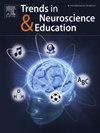教育研究中的神经生物学压力标记:系统回顾健康科学教育中的生理学见解
IF 3.4
Q2 NEUROSCIENCES
引用次数: 0
摘要
背景健康科学教育中传统的自我报告测量往往忽略了认知和情绪反应背后的生理过程。目的本综述旨在分析生理指标在了解学习环境中认知和情绪动态方面的频率、敏感性和实用性。分析的指标包括心率(HR)、心率变异性(HRV)、皮质醇、α-淀粉酶、睾酮、s-IgA、血压、血氧饱和度和呼吸频率。皮质醇和α-淀粉酶的结果参差不齐,而睾酮和s-IgA在直接评估压力反应方面的作用有限。结论 学习环境中的生理指标可以为了解情绪和认知动态提供有价值的信息,但不应被误解为学习效果的直接指标。本文章由计算机程序翻译,如有差异,请以英文原文为准。
Neurobiological stress markers in educational research: A systematic review of physiological insights in health science education
Background
Traditional self-reported measures in health science education often overlook the physiological processes underlying cognitive and emotional responses.
Purpose
This review aims to analyze the frequency, sensitivity, and utility of physiological markers in understanding cognitive and emotional dynamics in learning environments.
Methods
A systematic PubMed search identified 156 records, with 13 studies meeting inclusion criteria. Markers analyzed included heart rate (HR), heart rate variability (HRV), cortisol, alpha-amylase, testosterone, s-IgA, blood pressure, oxygen saturation, and respiratory rate.
Main Findings
HR and HRV were sensitive to educational stressors. Cortisol and alpha-amylase showed mixed results, while testosterone and s-IgA showed limited utility in directly assessing stress responses. No consistent link was found between any marker and immediate learning success.
Conclusion
Physiological markers in learning environments can offer valuable insights into emotional and cognitive dynamics but should not be misconstrued as direct indicators of learning outcomes.
求助全文
通过发布文献求助,成功后即可免费获取论文全文。
去求助
来源期刊

Trends in Neuroscience and Education
NEUROSCIENCES-
CiteScore
6.30
自引率
6.10%
发文量
22
审稿时长
65 days
 求助内容:
求助内容: 应助结果提醒方式:
应助结果提醒方式:


